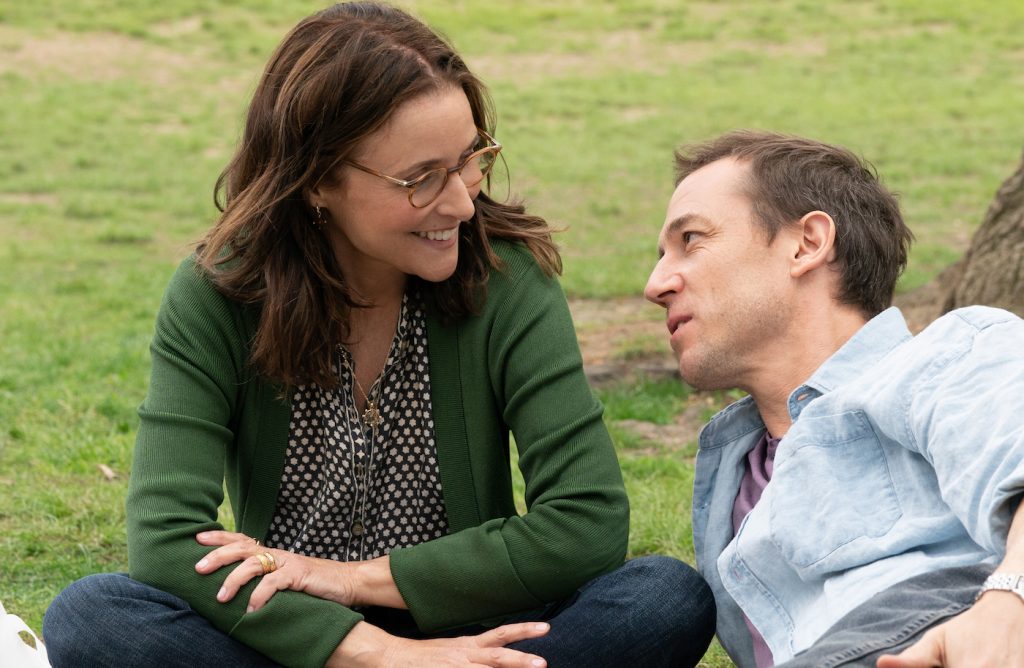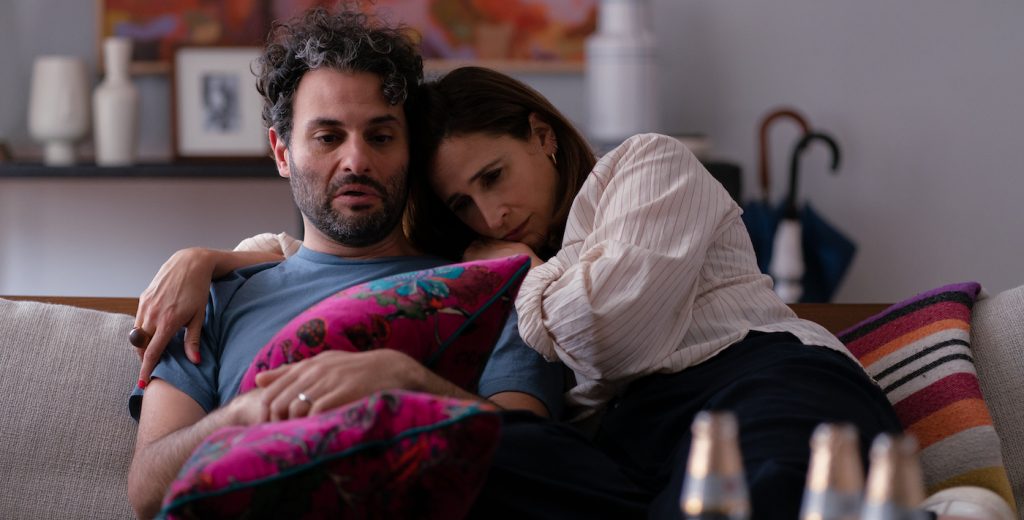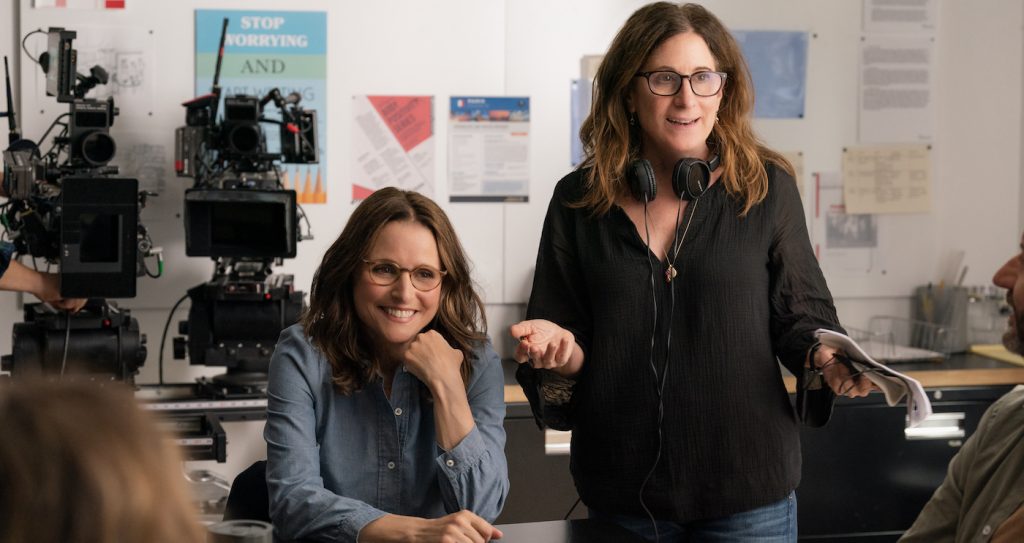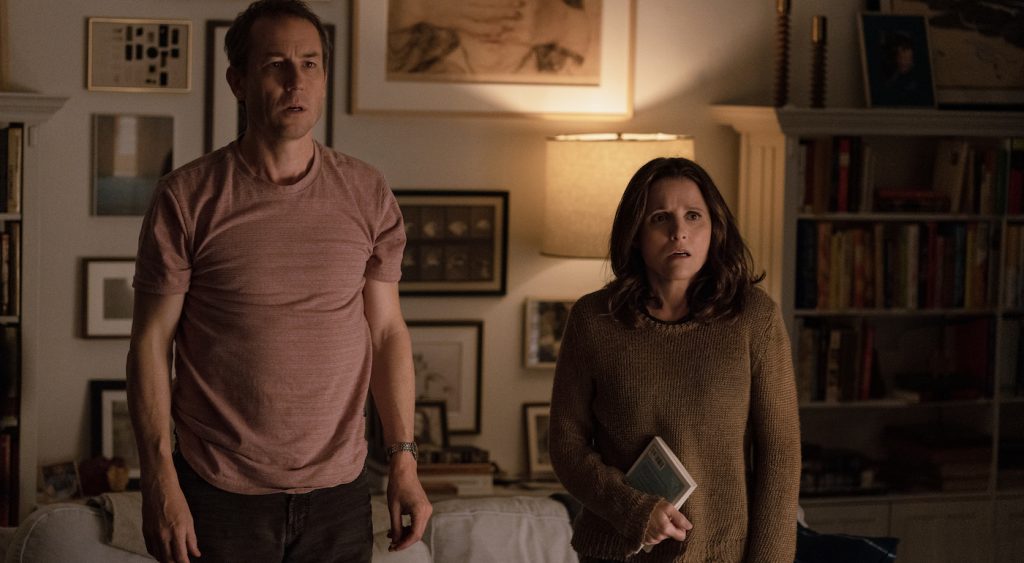“You Hurt My Feelings” Cinematographer Jeffrey Waldron on Re-Teaming With Nicole Holofcener
When is it ok to hide the truth from your partner? That’s what writer-director Nicole Holofcener (Enough Said) examines in her latest film, You Hurt My Feelings. The Sundance premiere was scooped up by A24 and reconnects Holofcener with Julia Louis-Dreyfus as Beth, a novelist writing her latest book who overhears her husband Don (Tobias Menzies) sharing his no-so-flattering opinion about it. Now, it’s a matter of if and when Beth will confront Don (and what will become of it).
New York is the backdrop for the circling drama that entangles Beth’s sister Sarah (Michaela Watkins), and her husband, Mark (Arian Moayed). The contentious moments play out in living rooms, bedrooms, and dinner tables. Cinematographer Jeffrey Waldron (Little Fires Everywhere) was tasked with creating the intimacy of the story, and through a tapestry of texture, contrast, and composition, he deepens each scene with nuance.
Waldron sits down with The Credits to detail his collaboration with Holofcener, creating the visual language on a limited schedule, and how working with women has influenced his decisions on set.
You’ve worked with director Nicole Holofcener on the HBO series Mrs. Fletcher. How was it reconnecting with her on You Hurt My Feelings?
I actually almost didn’t get to shoot this project. I was working on the film Haunted Mansion with director Justin Simien when Nicole first called, and sadly our schedules overlapped. When I later checked in with Nicole to see how the shoot went, she told me it was pushed and asked if I might be able to do it. The timing turned out to be perfect. She admitted they had very little money and a very fast schedule, the fastest she’s ever had for a feature, but I loved the script and was excited to do this one.

Since you’re shooting on a tight schedule, how thoroughly did you want to approach prep?
Nicole is a very instinctual filmmaker, so we didn’t do a lot of visual prep until we were able to visit locations with Julia Louis-Dreyfus and Tobias Menzies to work out the scenes ahead of time. Then I would find compositions based on the blocking I saw, which meant I wouldn’t have to come up with them during the scramble of the day. I’d also go to locations like Central Park and photograph areas, create compositions and then draw characters over them on my iPad to present to Nicole. Each scene had its own punctual composition, so it was about finding that for each of them.
What’s refreshing about the visual style of the film is its controlled frame. Was that the intention going into production?
Nicole has a cinematic style of her own that tends to be understated. Handheld isn’t used unless it’s very motivated. With this project, we wanted to keep this down-to-earth, indie vibe that’s almost static with very subtle moves. For certain moments there’s a very slow, almost invisible push to add weight without calling attention to itself.

That approach worked well for the story because when you do go handheld, it has a greater impact. For instance, the scene where Beth overhears Don talking about her in the store.
Exactly. That scene is the crux of the film. Beth becomes sick to her stomach and then runs out to the street. We suddenly switch to this handheld vibe to parallel the scene’s chaotic energy, and you really feel it because we’ve been so restrained.

One of the larger locations is the home of Beth and Don. The lighting seemed to be motivated by the practical fixtures sprawled throughout the house. How did you work with production designer Sally Levi to create the setting?
After we were able rehearse and get a sense of the blocking, I worked with Sally to make sure there were practicals in ideal places for lighting motivation. That location was on the Upper West Side, not far from where Nicole grew up. The apartment was located on the 16th floor of the building so we couldn’t really push light through the windows, and because it was somebody’s home, we couldn’t drill or rig any lights to the ceiling. Everything was motivated by the practical lights in each scene and had to be done on the floor with the space we had. The realness and appropriateness of the location was worth all of the challenges, and by working around them, I think we created a more authentic look.

There is a grounding realism to the lighting but there’s still a subtle inherent style to it. Was there a balance you were towing with your lighting setups?
I set out to make a heightened natural style to complement the voice of the script, which strikes this very nuanced tone between comedy and drama with a sort of heightened realism. I think a lot of the big conversations in Beth and Don’s home lean more dramatic, so in terms of lighting, we emphasized softness but also shape and drama to give weight to the stakes for Beth and Don. Some viewers might see what they’re going through to be petty and small, but to them in this moment, it’s almost life and death. We wanted to play into what the characters were feeling during this somewhat existential incident in their marriage.
How did you approach shooting the birthday dinner where everything between Beth and Don comes out?
That was another real apartment, and the space was quite limited. That kind of scene with four people is pretty open-ended, with potentially dozens of eyelines to cover. I decided to put Julia’s character Beth on the camera side of the master, with Tobias’s character Don opposite her. This made it easy to anchor all of the eyelines to Beth and Don and naturally gave those two the tightest eyelines in the scene. The subtext is played in the looks between all of the characters and towards the fighting couple, so this worked perfectly for both the schedule and the story.
Near the end of the scene, we see Beth leave and start walking the streets of New York at dusk. How did you time out that climactic moment?
We shot the dinner table scene through a big chunk of a day. I wanted to create a consistent lighting tone that was unique to that half hour after sunset, knowing we’d shoot Don chasing Beth down the street at blue hour right before all of the street lights started to come on. We actually blue-gelled and ND’d all the windows in the apartment for that dinner scene so the high noon sun went darker and bluer and the practicals could do a bit more of the work, giving that magic hour feeling. Then during the actual 35 or so minutes after the sunset, we ran out to get the continuation of the scene.
And then you had to contend with the challenges of shooting in New York. How did production approach those hurdles?
It’s such a unique place to shoot. It’s inherently cinematic, but it doesn’t stop for you. You’re out there in a chaotic world where you don’t own the roads, there are paparazzi walking right into the set, and there’s nothing you can really do about it. We’d have these one-shot walk and talks, like with Don and Mark coming from Union Square to the Paragon store where we don’t own any of the streets and have no real control. You could have a great two-minute take, and then someone with a COVID mask walks right in, and you have to start over. A bright white van can just park right in the middle of your shot. Those things can be really tricky as you don’t have the control you might shooting in places like Atlanta or Los Angeles, but hey, you’re shooting Central Park, you’re shooting Union Square, which is amazing.
In your career, you’ve worked with women at the helm and as camera operators. How has that influenced your work?
Jennie Jeddry was our main camera operator on this film, and she offered so many great suggestions and ideas. It’s always amazing to have another set of talented eyes on everything, but she was also great at running the set with the second team and our on-set dresser while we would scramble to put together a lighting setup. I love working with female directors and female operators because there always tends to be this attention to certain details and instincts outside of my own that help broaden my approach. I also just love working with kind, giving, supportive people like Nicole and Jennie. They both bring a unique nuance and perspective to things, which in the end, made everything better.
You Hurt My Feelings hits theaters on May 26, 2023.
Featured image: (L-R) Tobias Menzies, Julia Louis-Dreyfus Credit: Jeong Park



